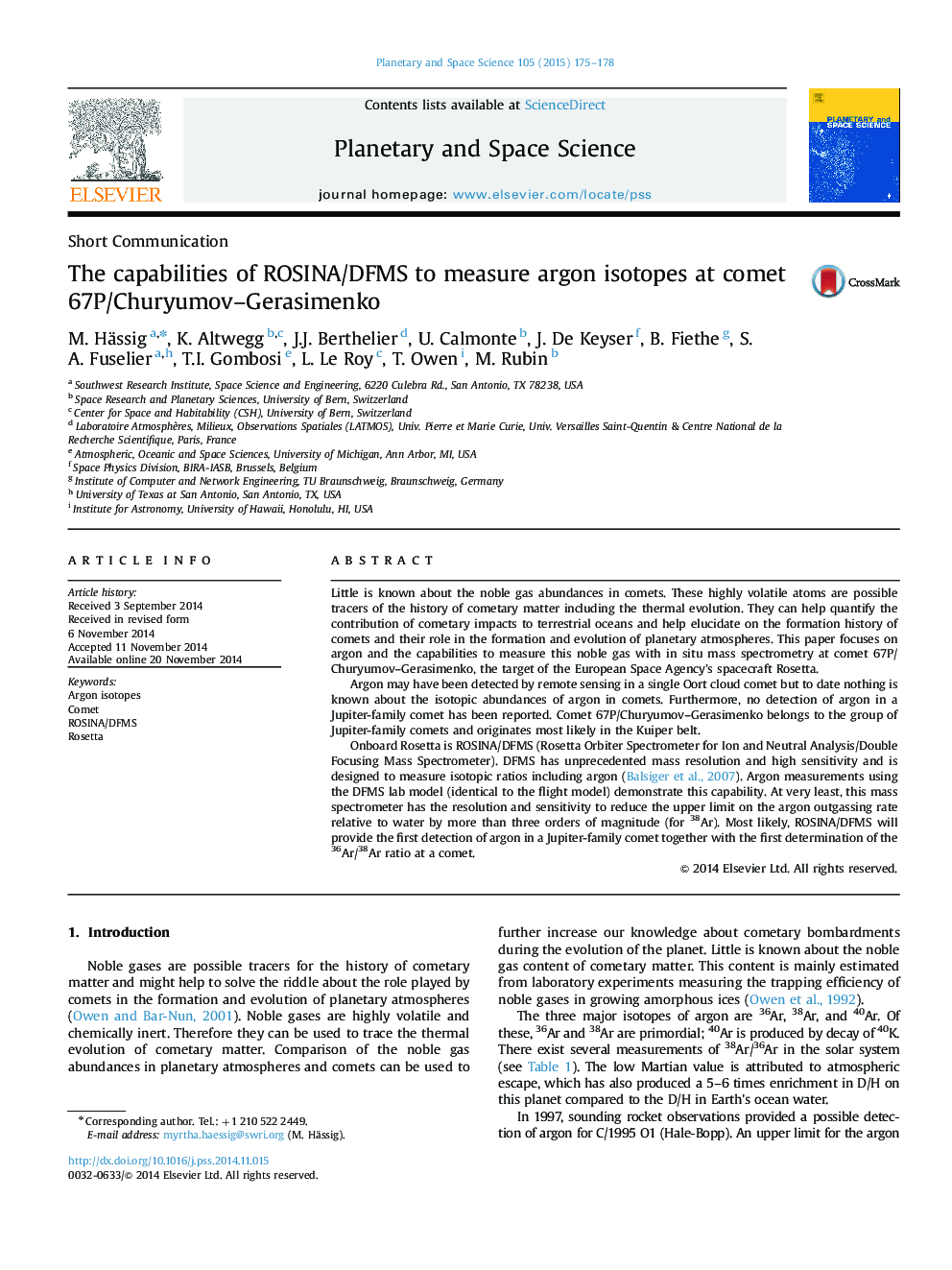| Article ID | Journal | Published Year | Pages | File Type |
|---|---|---|---|---|
| 1781073 | Planetary and Space Science | 2015 | 4 Pages |
•DFMS is capable to provide the first detection of argon in a Jupiter-family comet.•DFMS is capable to reduce the current upper limit on Ar/H2O outgassing by >103 (for 38Ar).•DFMS is capable to make the first determination of the 36Ar/38Ar ratio at a comet.
Little is known about the noble gas abundances in comets. These highly volatile atoms are possible tracers of the history of cometary matter including the thermal evolution. They can help quantify the contribution of cometary impacts to terrestrial oceans and help elucidate on the formation history of comets and their role in the formation and evolution of planetary atmospheres. This paper focuses on argon and the capabilities to measure this noble gas with in situ mass spectrometry at comet 67P/Churyumov–Gerasimenko, the target of the European Space Agency׳s spacecraft Rosetta.Argon may have been detected by remote sensing in a single Oort cloud comet but to date nothing is known about the isotopic abundances of argon in comets. Furthermore, no detection of argon in a Jupiter-family comet has been reported. Comet 67P/Churyumov–Gerasimenko belongs to the group of Jupiter-family comets and originates most likely in the Kuiper belt.Onboard Rosetta is ROSINA/DFMS (Rosetta Orbiter Spectrometer for Ion and Neutral Analysis/Double Focusing Mass Spectrometer). DFMS has unprecedented mass resolution and high sensitivity and is designed to measure isotopic ratios including argon (Balsiger et al., 2007). Argon measurements using the DFMS lab model (identical to the flight model) demonstrate this capability. At very least, this mass spectrometer has the resolution and sensitivity to reduce the upper limit on the argon outgassing rate relative to water by more than three orders of magnitude (for 38Ar). Most likely, ROSINA/DFMS will provide the first detection of argon in a Jupiter-family comet together with the first determination of the 36Ar/38Ar ratio at a comet.
